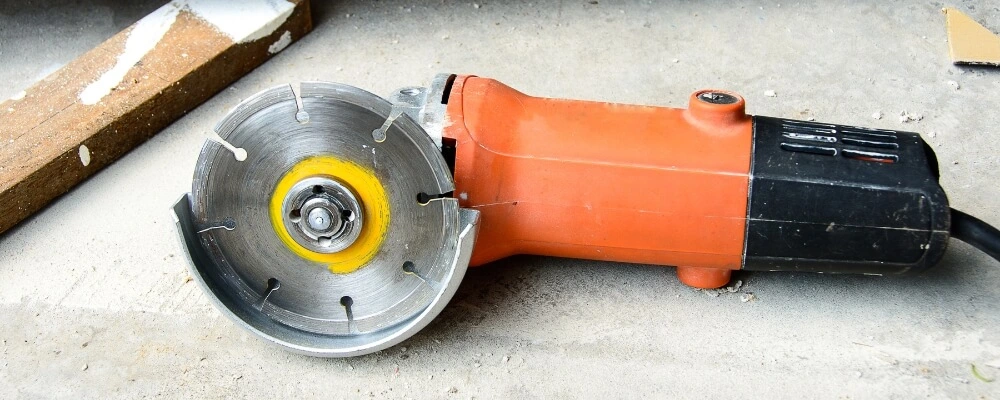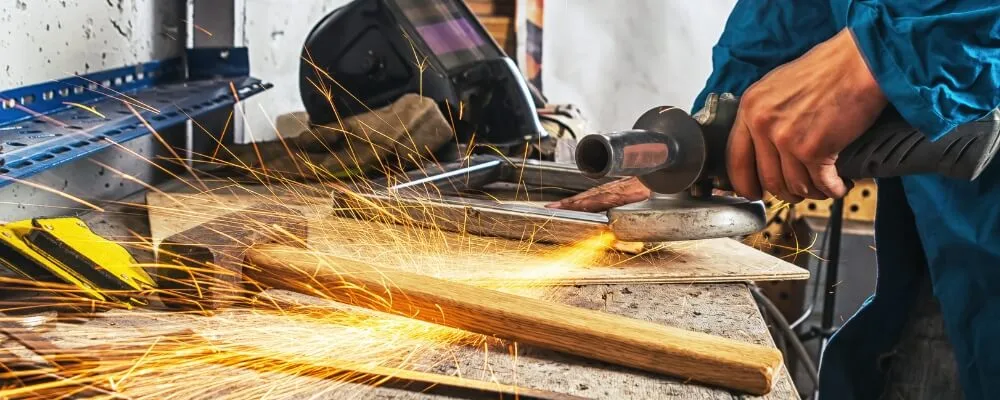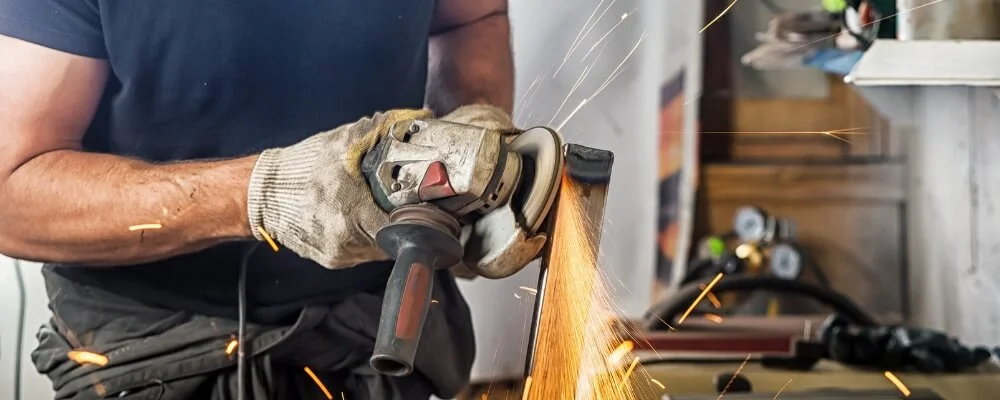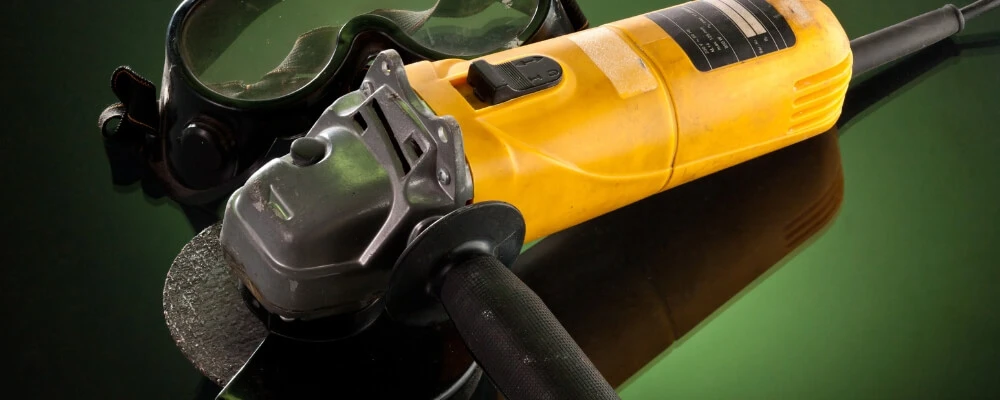Angle grinders, with their versatility in function, have become indispensable tools in any handyman’s arsenal. Used for a plethora of tasks such as cutting, grinding, and polishing, these powerful tools make a significant impact in various domains, from metalworking to construction.
However, the utility of angle grinders does not come without risks. The high-speed operation and the nature of their work make them susceptible to numerous hazards, capable of causing serious injuries if not handled with due diligence and respect.
In this blog, we will delve into ten different hazards associated with the use of angle grinders and explore the safety precautions that should be adhered to, in order to mitigate these risks. From flying debris to the dangers of kickback, each hazard poses its unique set of challenges, necessitating a comprehensive understanding and application of safety measures.
By shedding light on these potential dangers and preventive strategies, this blog aims to foster a safer working environment and promote responsible and informed use of angle grinders.
Whether you are a seasoned professional or a DIY enthusiast, being aware of these hazards and implementing the recommended precautions can be instrumental in preventing accidents and ensuring your well-being during the operation of these potent tools.
10 Different Angle Grinder Hazards And Safety Precautions
Angle grinders are versatile tools used for cutting, grinding, and polishing materials, but they can be hazardous if not used properly. Here are ten different hazards associated with angle grinders and the safety precautions that should be taken to mitigate these risks:

1. Flying Debris
When using an angle grinder, particles can fly off during the grinding or cutting process, posing a significant hazard. This flying debris can include metal fragments, dust, or the material being worked on, and can cause serious eye injuries or facial lacerations.
To mitigate this risk, it is crucial to wear safety goggles or a full-face shield to protect the eyes and face from potential harm. Ensuring a secure and well-fitted protective gear can prevent small and high-speed particles from reaching the eyes or face, thus avoiding any severe injuries.
2. Kickback
Kickback is a sudden and uncontrolled movement of the grinder, typically occurring if the grinder catches on the material. This can be extremely dangerous as it can lead to loss of control and result in serious injuries.
To prevent kickback, users should maintain a firm grip on the grinder and position their bodies to the side of the wheel, not directly in line with it. This positioning helps in reducing the impact of a kickback and allows for better control over the tool, minimizing the risk of accidents.
3. Noise
Angle grinders produce high noise levels, and prolonged exposure to such noise can lead to permanent hearing loss. The noise generated can be intense and, over time, can damage the delicate structures within the ear, leading to irreversible hearing impairment.
Wearing ear protection such as earplugs or earmuffs is essential to safeguard hearing. These protective devices reduce the intensity of the noise reaching the ears, thereby preventing hearing damage and reducing discomfort during operation.
4. Vibration
Extended use of angle grinders can expose users to vibrations, leading to conditions like Hand-Arm Vibration Syndrome (HAVS), characterized by symptoms like numbness, tingling, and loss of strength in the hands.
To combat the effects of vibration, users should wear anti-vibration gloves and take regular breaks to allow their hands to rest. These measures can help in reducing the onset of vibration-induced disorders and ensure the user’s comfort and well-being during prolonged usage.
5. Disc Breakage
The disc of an angle grinder can break or shatter during operation due to manufacturing defects, damage, or expiry. This can result in fragments flying off at high speeds, posing a risk of injury.
To avoid disc breakage, it is essential to inspect discs for any visible damage before use and refrain from using damaged, defective, or expired discs. Regular inspection and adherence to manufacturer’s guidelines can significantly reduce the risk associated with disc breakage.

6. Electric Shock
Damaged cords or plugs can expose users to the risk of electric shock. This can occur when the insulation of the cord or the plug is compromised, allowing for the flow of electric current through unintended paths.
Regular inspection of cords and plugs for any signs of damage is crucial, and the use of a Residual Current Device (RCD) can provide an additional layer of protection by cutting off the power supply in the event of a fault, thus preventing electric shock.
7. Dust Inhalation
The grinding process generates a considerable amount of dust, which, if inhaled, can lead to respiratory problems such as asthma, silicosis, and other lung conditions. Wearing a dust mask or a respirator is essential to prevent the inhalation of harmful dust particles.
Additionally, using dust extraction systems can help in removing airborne dust at the source, ensuring a cleaner and safer working environment.
8. Fire Hazard
Sparks generated during the grinding process can ignite flammable materials in the vicinity, leading to fire hazards. To prevent fires, it is important to clear the area of any flammable materials before starting the grinding operation and to have a fire extinguisher readily available.
By maintaining a clean and organized workspace, users can significantly reduce the risk of fire-related incidents.
9. Entanglement
Loose clothing, long hair, or jewelry can become entangled in the moving parts of the grinder, causing severe injuries. To avoid entanglement, users should tie back long hair, avoid wearing loose clothing, and remove any jewelry before operating the grinder.
Adhering to these precautions can help in preventing any unwanted entanglement and ensure the safety of the operator.
10. Cuts and Abrasions
Contact with the rotating disc of an angle grinder can cause cuts and abrasions, which can be severe depending on the speed and type of disc used. Wearing gloves can provide a layer of protection to the hands, and avoiding touching the disc during operation can prevent accidental contact.
By being mindful of the rotating parts and wearing appropriate protective gear, users can avoid unnecessary injuries and ensure the safe operation of the tool.

Additional Angle Grinder Safety Rules To Prevent Accidents
When operating an angle grinder, adhering to additional safety rules can further prevent accidents and ensure a safe working environment. Here are some additional safety rules:
1. Use the Right Tool for the Job
Ensure that the angle grinder is suitable for the task at hand. Using the wrong type or size of the grinder or attachment can lead to unsafe operating conditions and an increased risk of accidents. Always refer to the manufacturer’s instructions to determine the suitability of the tool for the intended application.
2. Check Equipment Regularly
Regularly inspect the grinder and its components, including the guard, handle, and flanges, for any signs of damage or wear. Any damaged or worn-out parts should be repaired or replaced immediately to maintain the tool’s integrity and safety.
3. Secure Workpieces
Always secure the workpiece firmly using clamps or a vice to prevent movement during grinding or cutting. A stable workpiece allows for more controlled and safer operation of the grinder.
4. Maintain a Safe Working Distance
Keep bystanders, especially children and pets, at a safe distance from the work area to avoid any potential injuries from flying debris or other hazards.
5. Keep a Firm Grip
Hold the grinder with both hands for better control and stability during operation. A firm grip reduces the risk of losing control of the tool, especially in the event of a kickback.
6. Use Guards Properly
Never remove or modify the guards provided with the grinder. These guards are designed to protect the operator from flying debris, sparks, and accidental contact with the wheel.

7. Avoid Overloading the Tool
Do not force the grinder into the workpiece, as this can overload the tool and increase the risk of kickback or disc breakage. Allow the grinder to do the work at its own pace without excessive pressure.
8. Store Properly
When not in use, store the angle grinder in a secure and dry place, away from the reach of unauthorized or untrained individuals, to prevent any unintended use or damage to the tool.
9. Stay Alert
Always stay focused and alert while operating the grinder. Avoid using the tool when fatigued, distracted, or under the influence of alcohol or drugs, as this can impair judgment and reaction times, leading to accidents.
10. Wear Appropriate Clothing
Wear tight-fitting, non-flammable clothing and sturdy, non-slip footwear to avoid any entanglement or fire hazards. Avoid wearing gloves with loose cuffs, and ensure that all protective gear is securely fitted.
11. Keep the Work Area Clean and Well-lit
Maintain a clean, organized, and well-lit work area to avoid tripping hazards and to have a clear view of the workpiece and the tool. A clutter-free and adequately illuminated workspace contributes to overall safety during grinder operation.
By following these additional safety rules along with the precautions above, users can significantly reduce the risk of accidents and injuries while operating angle grinders.
Conclusion
In conclusion, the versatility and efficacy of angle grinders make them invaluable tools in various applications, ranging from construction to metalworking. However, the inherent risks and hazards associated with their use necessitate a vigilant and informed approach to ensure safety during operation.
The ten different hazards highlighted in this blog underscore the diverse challenges users may encounter, emphasizing the importance of implementing the corresponding safety precautions diligently.
By adopting a comprehensive safety protocol, including wearing appropriate personal protective equipment, maintaining the equipment regularly, and adhering to safe operating practices, users can significantly mitigate the risks associated with angle grinders.
Awareness and adherence to safety precautions are paramount in fostering a secure and productive working environment, allowing users to harness the full potential of angle grinders without compromising their well-being.

